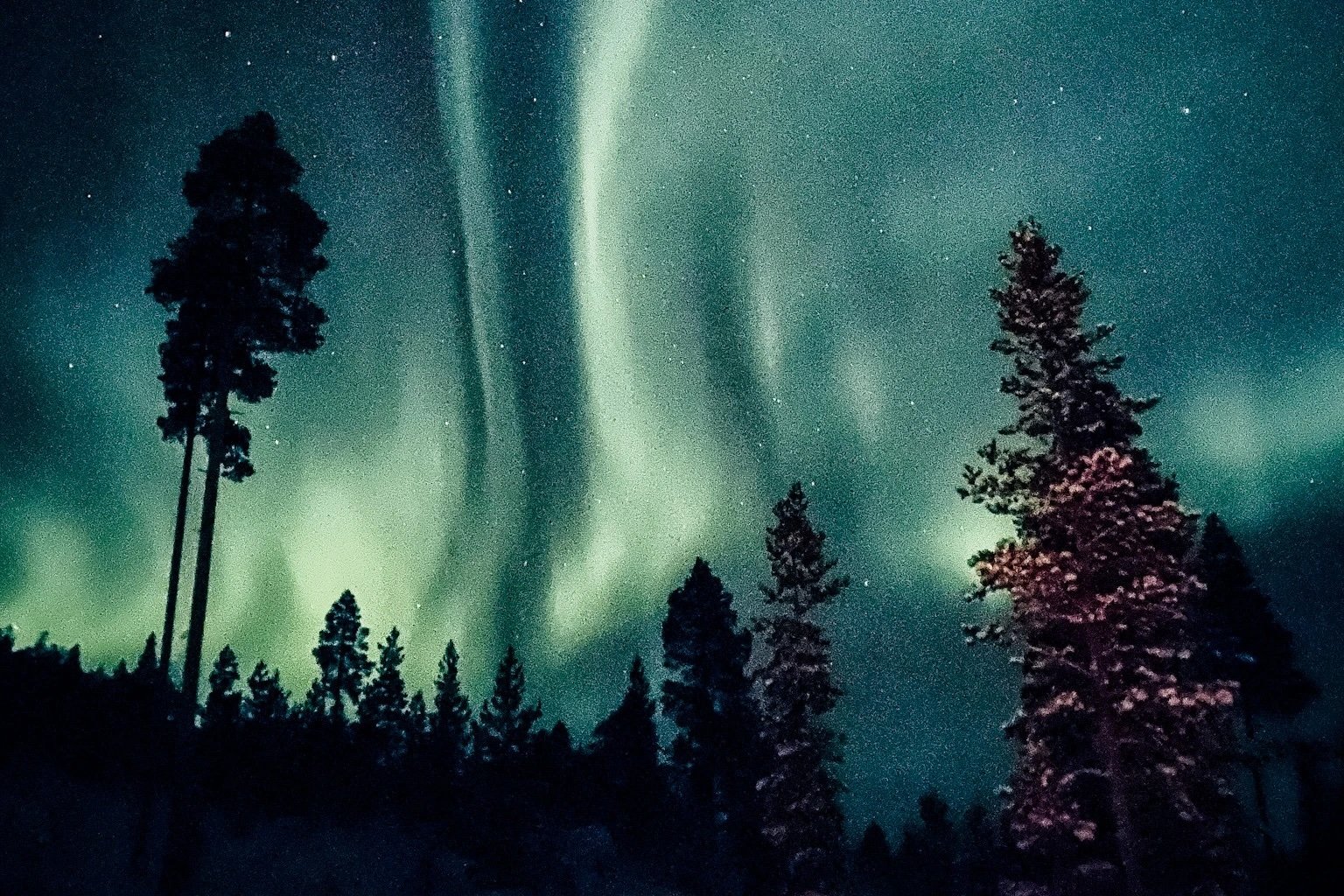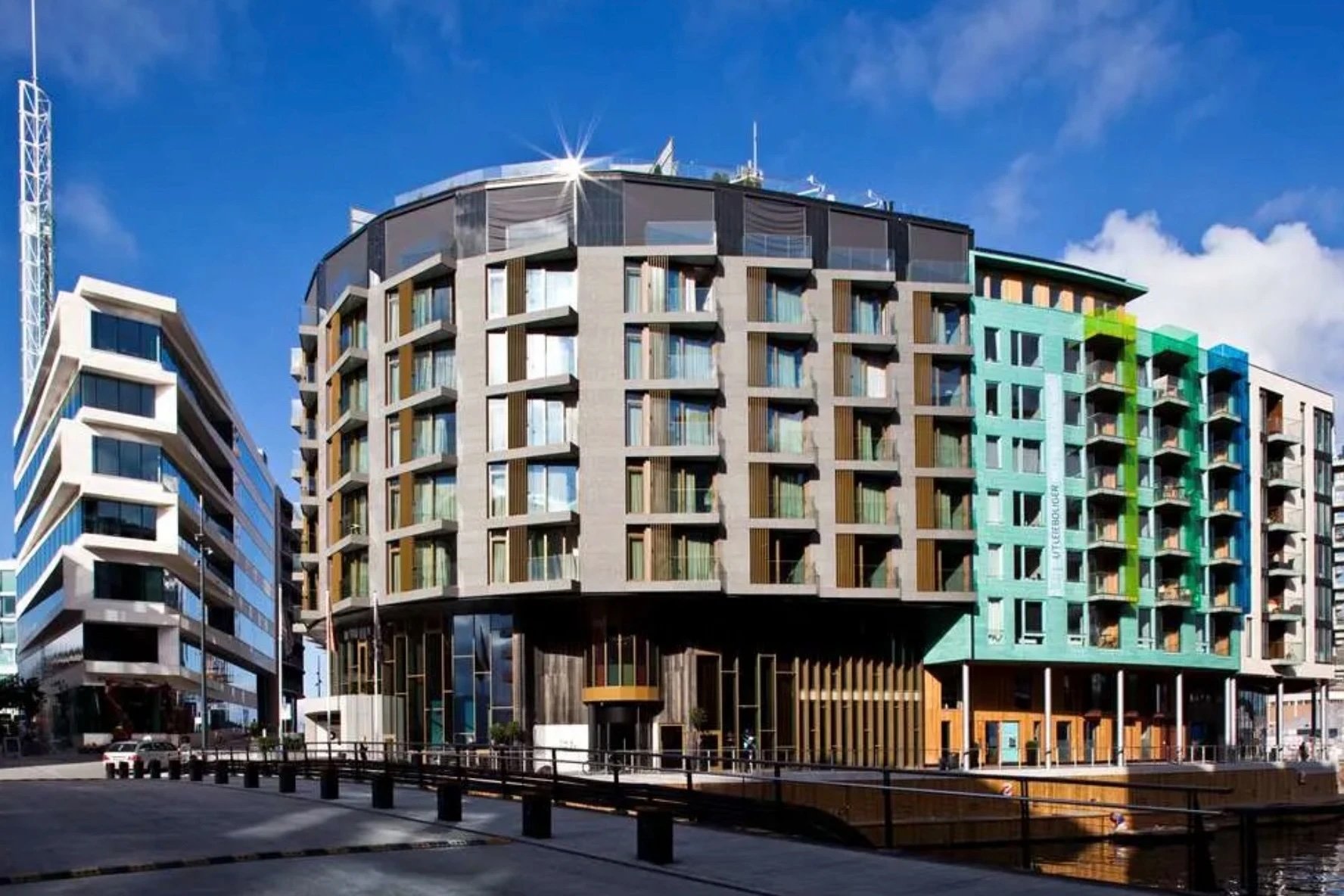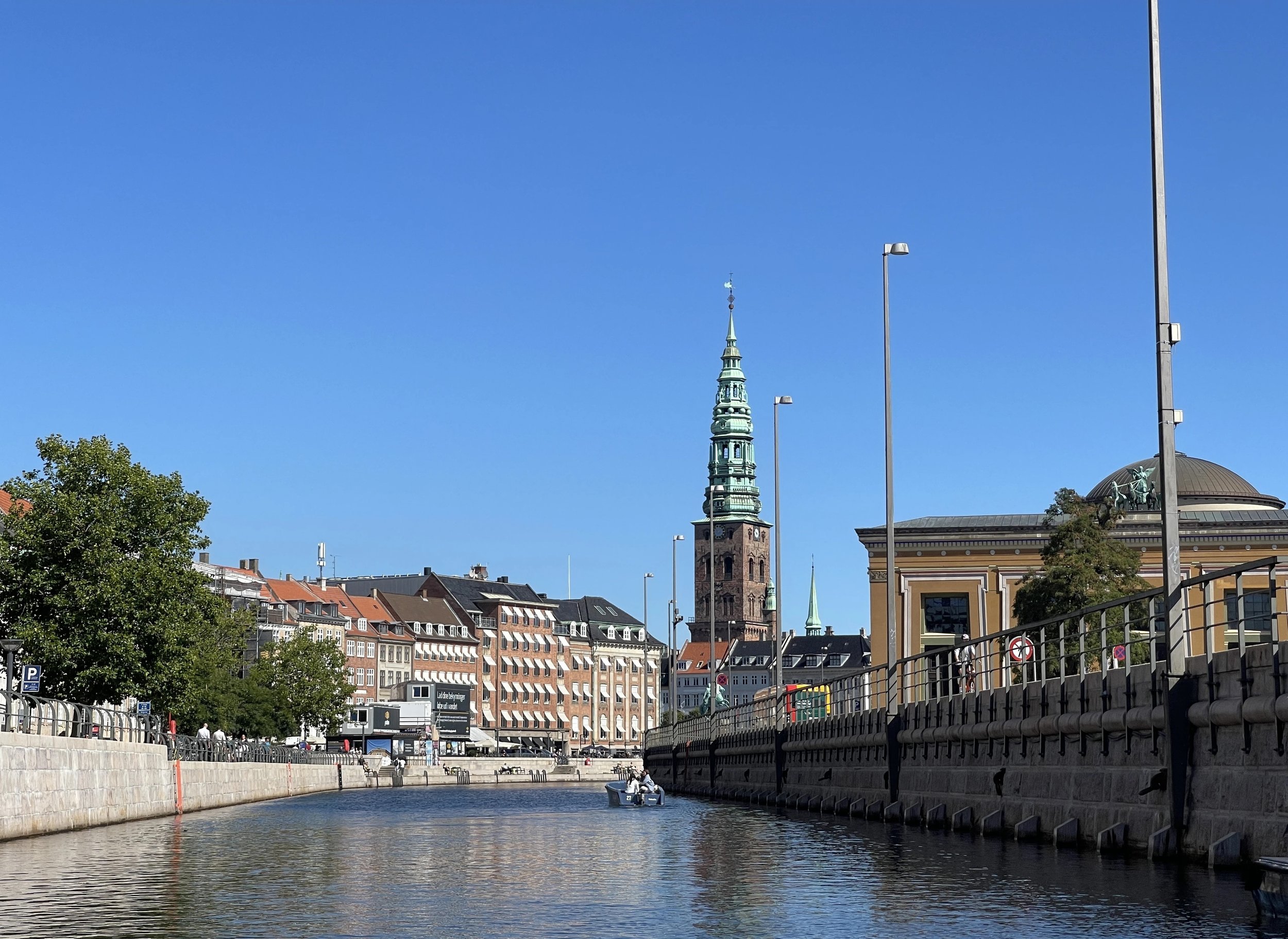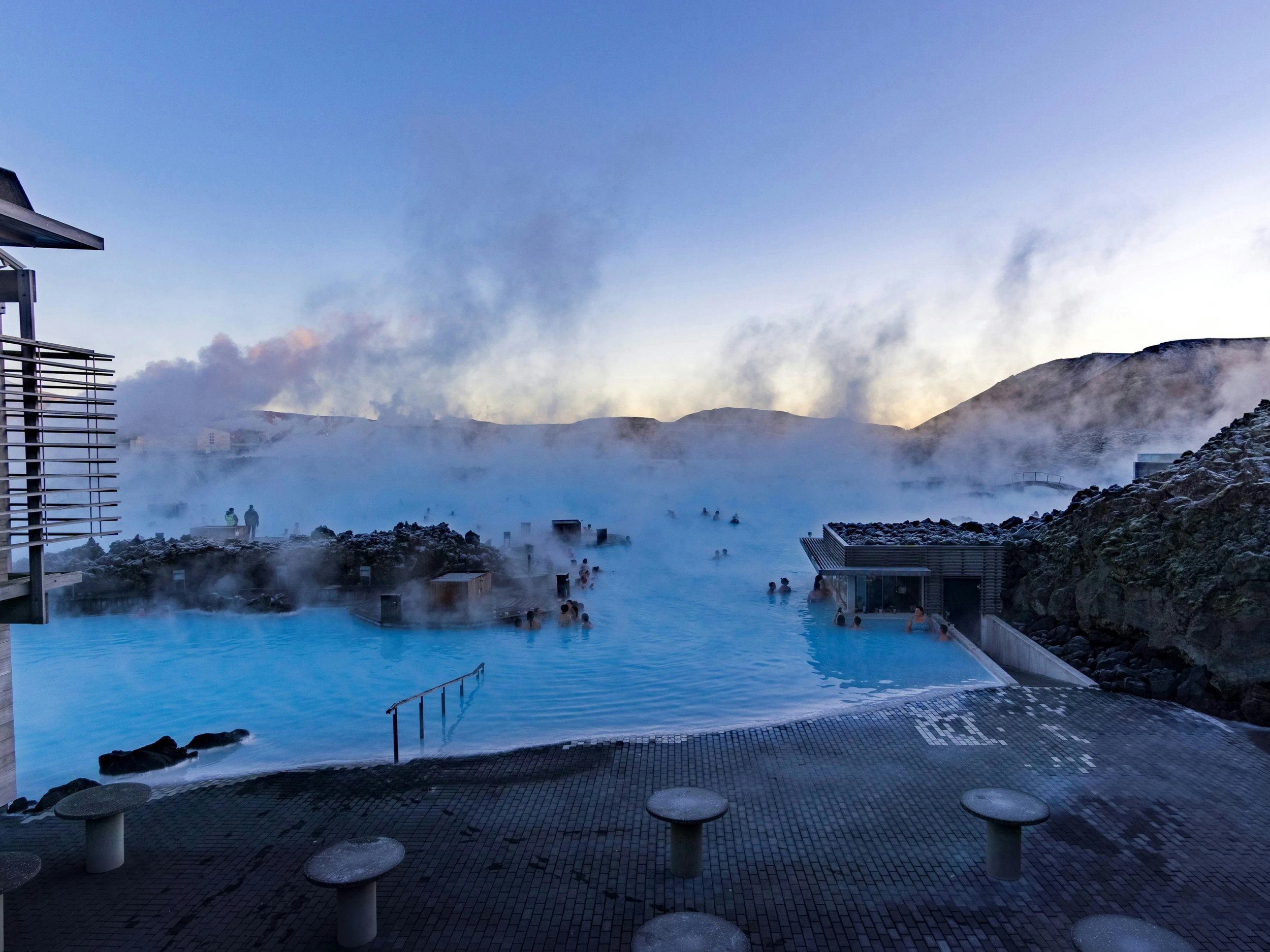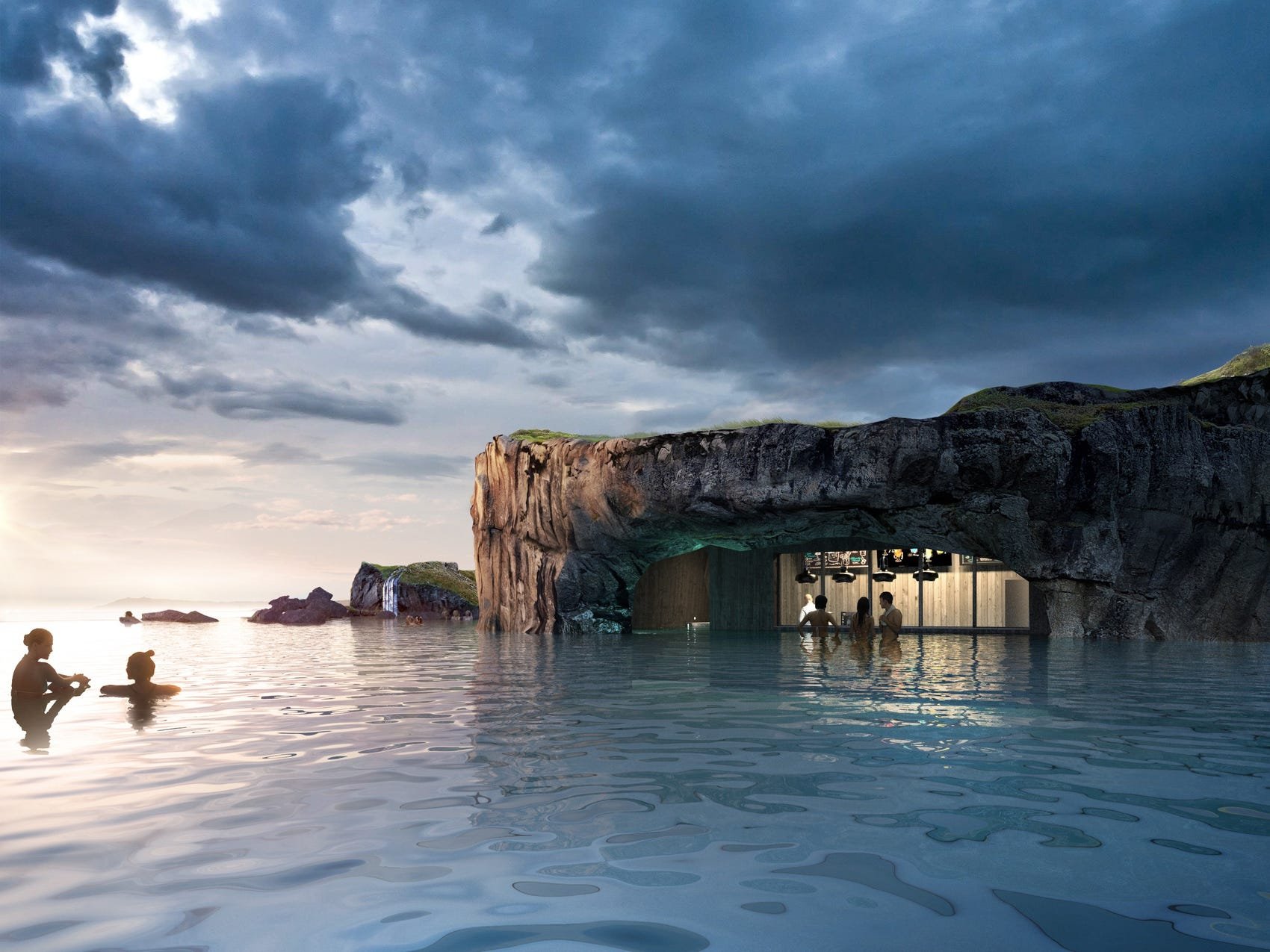Insider's Guide to the Nordic Region
Nordic countries inspire thoughts of colorful skies rippling with the Northern Lights and sleighs dashing through snowy winter wonderlands — but they are so much more.
A trip to the Nordics is for anyone who loves urban cultural stops paired with exceptional landscapes, plus a bit of adventure thrown in. And each season brings a totally different set of experiences.
Nordic countries inspire thoughts of colorful skies rippling with the Northern Lights and sleighs dashing through snowy winter wonderlands — but they are so much more.
A trip to the Nordics is for anyone who loves urban cultural stops paired with exceptional landscapes, plus a bit of adventure thrown in. And each season brings a totally different set of experiences.
From Norway's fjords to Finland’s Lapland, I’ve put together some of my favorite intel about where to go and what to see in the Nordic Region, including Norway, Sweden, Finland and Denmark.
So whether you’re visiting open-air summer markets and majestic palaces in Copenhagen or chasing the Northern Lights in Abisko National Park, Sweden, here are some of the best places to stay, plus where to go and what to do.
For personalized suggestions and detailed itineraries, reach out to me to start planning your Nordic getaway.
Need to know
Currency
The official currencies vary across the region: the Swedish Krona (SEK) in Sweden, Norwegian Krone (NOK) in Norway, Danish Krone (DKK) in Denmark and Euro (EUR) in Finland.
Transportation
Trains, ferries and car rentals are the primary modes of transportation in the Nordic countries. Urban settings like Helsinki, Stockholm and Oslo are very walkable, and bicycles (there’s a substantial network of bike paths) are hugely popular during warmer months.
Airports
Norway: Oslo Gardermoen Airport (OSL) is the main international gateway to Norway and sits about 30 minutes from Oslo. Tromsø Airport (TOS) is in northern Norway and is a good choice when exploring the Arctic region.
Sweden: Stockholm Arlanda Airport (ARN) is the main gateway to Sweden and is located about 40 minutes from Stockholm. Kiruna Airport (KRN) sits in the far north — use this airport when exploring Swedish Lapland.
Finland: Helsinki-Vantaa Airport (HEL) is a 30-minute drive from Helsinki. Rovaniemi Airport (RVN) in the heart of Lapland offers easy access to northern Finland.
Denmark: Copenhagen Airport (CPH) is located just 15 minutes from the city center by train or car.
Best time to visit
Summer (June to August): Expect mild to warm weather, with temperatures ranging from 60°F to 77°F. These months are best for exploring Sweden’s lakes, Finland’s forests and Norway’s fjords, with the northern areas experiencing the midnight sun for near-endless daylight. Denmark, a more year-round destination, is on the warm end of this range.
Winter (November to March): Winter temperatures range from 15°F to 32°F in the south to much colder in the far north. Skiing, snowmobiling and dog sledding are popular, while Northern Lights viewing peaks during this time across the region. You can view the fjords during this season, but remember daylight hours are limited so plan accordingly.
Ideal length of stay
A 7-10 night stay is perfect for a Nordic experience. This gives you time to hit the main attractions, like the Northern Lights, winter activities and local culture. For remote areas like Lapland or Tromsø, stay longer to account for longer travel times and a more immersive experience.
Signature dishes
Norway: Lutefisk (dried fish reconstituted in lye) and Rakfisk (fermented fish) are traditional dishes, often enjoyed during winter.
Sweden: Meatballs (köttbullar) served with lingonberry sauce and gravlax (cured salmon) are staples of Swedish cuisine.
Denmark: Smørrebrød (open-faced sandwiches) and Frikadeller (meatballs) are popular, hearty choices.
Finland: Karjalanpiirakka (rice-filled pastries) and Ruisleipä (rye bread) are Finnish comfort foods.
Languages and key phrases
English is widely spoken and understood in the Nordic countries, especially in the cities. Norwegian (both Bokmål and Nynorsk dialects), Swedish and Danish are the official languages of their respective countries, and Finland is bilingual, with both Finnish and Swedish.
Norway & Sweden: “Takk” (Thank you), “Hei” (Hello), “Vær så snill” (Please).
Denmark: “Tak” (Thank you), “Hej” (Hello), “Undskyld” (Excuse me).
Finland: “Kiitos” (Thank you), “Hei” (Hello), “Anteeksi” (Excuse me).
What to wear
Practical and comfortable clothing is essential. Be prepared for cold temperatures in winter months and cool nights in the summer months. Layered outfits, waterproof jackets and sturdy shoes are common. For upscale dining or city evenings, smart-casual attire is appropriate — think wool sweaters, tailored trousers and stylish boots. If you tend toward the modest side, make sure to bring a swimsuit for cold plunges and saunas.
Where to stay
Norway
Image courtesy of The Thief
Amerikalinjin, Oslo: A boutique, centrally located hotel housed in a historic building, blending Oslo’s maritime past with a modern aesthetic.
Preferred Platinum perks include a $100 hotel credit, daily breakfast, an upgrade and extended check-in/out whenever possible.
Sommerro, Oslo: An Art Deco-inspired hotel offering a stylish mix of historic charm and contemporary elegance in Oslo’s vibrant Frogner district.
Fora Perks include a $100 hotel credit, daily breakfast, an upgrade and extended check-in/out whenever possible.
The Thief: A sleek, design-forward hotel known for its modern art, waterfront views and its distinctive curved facade in Oslo’s trendy Tjuvholmen neighborhood.
Preferred Platinum perks include a $100 hotel credit, daily breakfast, an upgrade and extended check-in/out whenever possible.
Sweden
Image courtesy of Grand Hôtel Stockholm
Grand Hôtel Stockholm: A classic hotel overlooking the waterfront, offering elegant rooms and a rich history in central Stockholm.
Fora Perks include a $100 hotel credit, daily breakfast, an upgrade and extended check-in/out whenever possible.
Lydmar Hotel, Stockholm: A stylish boutique hotel with an artsy, relaxed vibe, known for its modern design and central location.
Fora Perks include a $100 hotel credit, daily breakfast, an upgrade and extended check-in/out whenever possible.
Finland
Image courtesy of Hotel St. George
Hotel St. George, Helsinki: A chic, wellness-focused hotel combining understated luxury with a relaxed vibe in the center of Helsinki.
Design Hotels Pro perks include a hotel credit, daily breakfast, an upgrade and extended check-in/out whenever possible.
The Barö, Finland: A nature-inspired retreat offering minimalist design and stunning archipelago views, perfect for a peaceful, eco-friendly getaway.
Runo Hotel Porvoo: A boutique hotel set in a historic building with airy, Scandinavian-inspired interiors style in a picturesque riverside setting.
Design Hotels Pro perks include a complimentary cocktail class, a welcome amenity, daily breakfast, an upgrade and extended check-in/out whenever possible.
Denmark
Image courtesy of Hotel Sanders
Villa Copenhagen: A grand, eco-conscious hotel that blends the clean lines of Danish style with historic elegance in a central location near Copenhagen’s main sights.
Preferred Platinum perks include a $100 hotel credit, daily breakfast, an upgrade and extended check-in/out whenever possible.
Hotel Sanders: A boutique hotel perfect for travelers looking for a quaint, welcoming stay near Copenhagen’s cultural sites.
Fora Perks include a complimentary lunch or dinner for two, daily breakfast, an upgrade and extended check-in/out whenever possible.
Activities
Norway
Northern Lights: Head to Tromsø for one of the best places to view the Northern Lights, along with dog sledding and whale watching.
Train: Take a scenic train or boat tour through Norway’s famous fjords, such as Sognefjord and Geirangerfjord, known for their beauty.
Bryggen Wharf: Explore Bergen’s colorful UNESCO-listed Bryggen Wharf and take the funicular up Mount Fløyen for breathtaking views.
Museums: Visit Oslo’s art museums, including the National Museum of Art and the Astrup Fearnley Museum for a mix of contemporary and classic art.
Sleigh rides: Participate in reindeer sleigh rides and learn about Sami culture in the northern regions of Norway.
Christmas markets: Stroll through Oslo’s Christmas Markets, where you can enjoy festive stalls, seasonal treats and holiday shopping.
Sweden
Northern Lights: Head to Abisko National Park, one of the best spots in the world to see the Northern Lights due to its clear skies.
Explore Stockholm: Don’t miss the historic neighborhood of Gamla Stan. A good way to see Stockholm’s archipelago is by boat. Museum WAY (a cultural hub by the water) will give you a great snapshot of the area’s history at the Viking Museum, Vasa Museum and Spiritmuseum, all located next to each other. Design lovers can wander through the Södermalm and SoFo neighborhoods, known for the arts, vintage shops and cool cafes.
Ice Hotel: Stay in the world-famous Ice Hotel in Jukkasjärvi, carved from ice each year.
Baking class: Take a cinnamon bun-making class to master the art of creating those sweet Swedish treats.
Boat ride: Get a unique vantage point of the city and its architecture by taking a boat tour. (I can help book this.)
Finland
Northern Lights: Witness the magical Northern Lights in Lapland (Ruka or Levi) and enjoy activities such as dog sledding, reindeer safaris and snowshoeing in Finland’s Arctic regions.
Sauna: Take part in the famous Finnish tradition — the sauna. And for those that have a hearty stamina, follow this with a cold plunge or roll in the snow.
Explore Helsinki: The capital city’s design district includes the Helsinki Cathedral and a market square where you’ll find local boutiques and cafes (don’t miss the delicious pastries — some of the best pastries you’ll taste anywhere).
Visit Santa Claus Village: Make your childhood dreams come true with a visit to Rovaniemi, the official home of Santa Claus. Families can’t miss this for a huge dose of festive charm.
Island hopping: Discover the beautiful islands in the Finnish archipelago with a boat tour from Turku.
Denmark
Museums: Explore Contemporary Art and Design at the Louisiana Museum of Modern Art and Designmuseum Danmark, where cutting-edge exhibitions meet Danish design heritage. Explore Aarhus and the ARoS Aarhus Art Museum, known for its rainbow-colored panoramic rooftop walk and exhibitions.
Botanical Gardens: Stroll through the gorgeous gardens at the Botanical Gardens in Copenhagen during warm months, and explore the exotic greenhouse plants all year — a perfect break from the bustling city.
Explore Copenhagen: Visit the Hidden Courtyards of Copenhagen, where tucked-away cafes and boutiques offer a more intimate setting for shopping and dining.
Northern Lights: Northern Lights viewing is possible in remote areas like Thy National Park, where you’ll find quiet luxury lodges about five hours from Copenhagen.
Add-on destinations
If you’re heading to the Nordic Region, it makes sense to spend a little extra time exploring some other nearby destinations. These spots make a good pairing with any of the Nordic countries because of their proximity and easy flight connections. Contact me for suggestions on where to stay and what to do, as well as some more options.
Iceland: Iceland is home to dramatic landscapes with volcanoes, geysers and hot springs. It’s a great addition for nature lovers and those who want outdoor adventure.
Edinburgh, Scotland: A short flight from the Nordic capitals, Edinburgh combines history with striking landscapes. Its medieval Old Town and Edinburgh Castle make it a good stop for travelers who want to experience more of Northern Europe’s heritage and charm.
Tallinn, Estonia: Hop on a ferry from Helsinki to reach Tallinn’s medieval Old Town, a UNESCO World Heritage site. You’ll feel like you’re stepping back in time with cobbled streets and centuries-old architecture — a great combo after soaking in some of the Nordic’s natural landscapes.
Riga, Latvia: Travelers reach Latvia via flight or ferry from Stockholm or Helsinki. Riga’s Art Nouveau architecture and Old Town make it interesting just to walk around. Summer months feature outdoor markets and cafes with terrace dining.
Amsterdam, Netherlands: Take a flight from any Nordic capital to Amsterdam for a mix of historic canals, world-class museums (like the Van Gogh Museum and Rijksmuseum) and a relaxed, bike-friendly culture. The city’s charming neighborhoods and easygoing vibe make it a great pairing with any Nordic itinerary.
For customized recommendations and expert planning, reach out to me to begin your Nordic adventure.
Beyond the Blue Lagoon: Discovering Iceland’s Hidden Hot Springs
I found myself wondering—what other geothermal gems are out there in this land of volcanoes and hot springs? It turns out, plenty. If you’re willing to go beyond Reykjavik, Iceland offers an incredible array of lesser-known but equally stunning hot springs—some of which are even better than the Blue Lagoon.
Like most travelers to Iceland, I couldn’t wait to visit the Blue Lagoon. It’s practically a rite of passage—a dreamy expanse of milky blue water set against a backdrop of black volcanic rock. The water, rich in silica, feels almost otherworldly as it envelops you in warmth, no matter the season. I floated lazily, slathered the mineral-rich mud on my face, and sipped a drink from the lagoon’s in-water bar, completely enchanted by the experience.
But here’s the thing: the Blue Lagoon is no secret. Tour buses roll in constantly, dropping off crowds of visitors eager to soak in its legendary waters. Even with its large size, the lagoon can feel packed, especially during peak hours.
While I don’t regret my visit for a second, I found myself wondering—what other geothermal gems are out there in this land of volcanoes and hot springs? It turns out, plenty. If you’re willing to go beyond Reykjavik, Iceland offers an incredible array of lesser-known but equally stunning hot springs—some of which are even better than the Blue Lagoon.
Here’s what I found:
1. Sky Lagoon: The Sophisticated Alternative
Located just a short drive from Reykjavik, Sky Lagoon is the easiest alternative to the Blue Lagoon, and it delivers an entirely different experience. Unlike the otherworldly, silica-rich waters of the Blue Lagoon, Sky Lagoon is all about seamlessly blending into nature. The infinity-edge pool looks out over the Atlantic Ocean, creating a dramatic contrast between the steamy water and the crashing waves beyond.
The real highlight? The seven-step Ritual, which takes you through a cycle of hot, cold, and steam experiences. Imagine going from a warm soak to a cold plunge, then stepping into a sauna with panoramic ocean views before indulging in a mineral scrub. It’s designed to invigorate, and it absolutely delivers. If you love the idea of a refined, spa-like experience without leaving the capital area, Sky Lagoon is perfect.
2. Mývatn Nature Baths: The Best Blue Lagoon Alternative
If you’re up for venturing further north, the Mývatn Nature Baths are well worth the trip. Located in the volcanic landscapes of North Iceland, this geothermal paradise offers the same milky blue waters as the Blue Lagoon, but with a fraction of the crowds.
Set amidst lava fields and steaming earth, Mývatn has a much more wild, untamed feel. It’s also a fantastic place to soak under the Northern Lights if you visit in winter. Even better? If you time your visit right, you can experience the Mývatn Winter Festival, held from late February to early March each year. This event combines local culture, winter sports, and—of course—plenty of hot spring relaxation, making it an unforgettable time to visit.
3. Vök Baths: Floating in Pure Icelandic Spring Water
Located in East Iceland, Vök Baths offer something truly unique: hot springs that float on a lake. Unlike the other geothermal pools, which are naturally rich in minerals, the water here is completely fresh and drinkable. The thermal pools extend out into Lake Urriðavatn, creating an incredible sensation of soaking in warm water while surrounded by a larger, cooler body of water.
Vök is also a fantastic place for those who love a more minimalist, peaceful setting. It’s beautifully designed, blending into the landscape with wood decking and infinity-edge pools. Since it’s further from Reykjavik, it tends to attract fewer visitors, making it one of the most serene soaking experiences in Iceland.
4. Húsavík: Hot Springs with a Side of Whale Watching
Húsavík is best known as Iceland’s whale-watching capital, but it also boasts some incredible geothermal waters. The Geosea Geothermal Sea Baths sit on the edge of a cliff, overlooking Skjálfandi Bay, offering a soak with a view. What makes these pools special is that they are filled with geothermal seawater—naturally warm, mineral-rich, and slightly salty.
Soaking in the hot water while scanning the horizon for whales? That’s an experience you can’t get anywhere else. Húsavík itself is a charming town, making it a great stop for those road-tripping around North Iceland.
Final Thoughts
The Blue Lagoon is famous for a reason—it’s a spectacular place, and I’d absolutely go back. But Iceland is a country filled with hot springs, many of which offer equally stunning experiences with fewer crowds and a deeper connection to the landscape. Whether you’re looking for oceanfront infinity pools, remote volcanic baths, or floating thermal lagoons, venturing beyond Reykjavik rewards you with some of the most unforgettable soaks of your life. So if you find yourself enchanted by Iceland’s geothermal magic, don’t stop at the Blue Lagoon. There’s a whole world of Icelandic hot springs waiting to be discovered!


